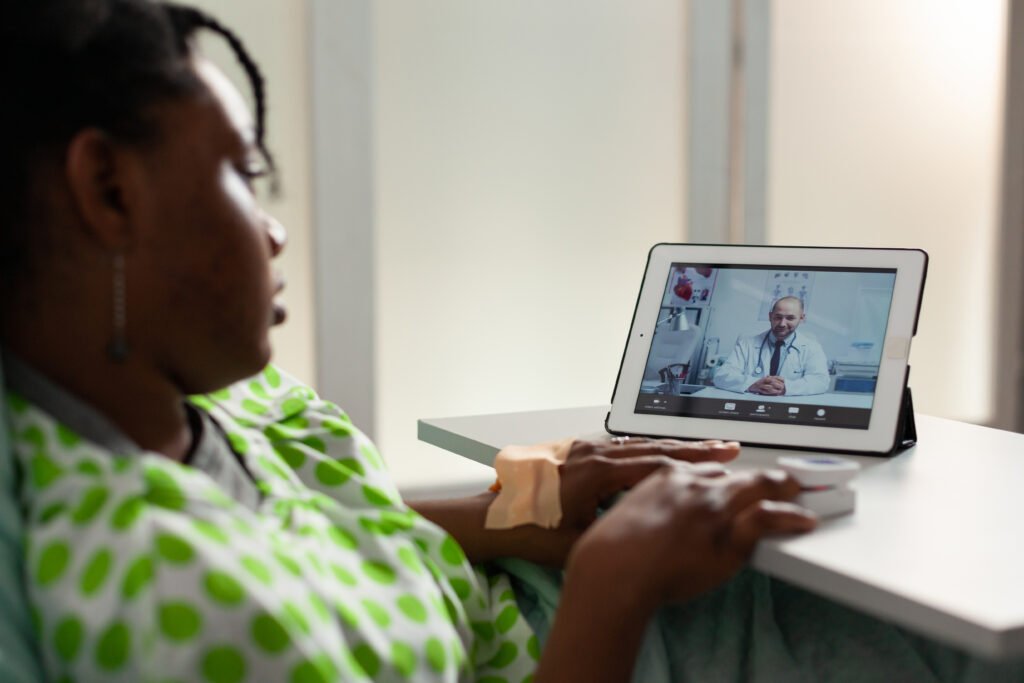Telehealth and Tele-Abortion: The Unlikely Guardian of Access in Restrictive States
Sanya Talwar
August 2025
A New Wave of Access
In the years since Dobbs, abortion access has fractured sharply across the U.S., yet a surprising trend is emerging—medication abortions delivered via telehealth are rising sharply, even in states with outright bans. A recent study found abortion pill provision rates were over three times higher in states that ban abortions compared with those without bans, and more than double in states banning telemedicine abortions altogether.[2]
Shield laws in states like New York and California are fueling this shift, protecting telehealth providers from prosecution when prescribing across state lines.[3] For many, this is the only viable option where clinics have closed.

The Power and Limits of Shield Laws
Shield laws work—recently, a New York court blocked Texas from punishing a doctor who prescribed abortion pills (mifepristone and misoprostol) to a Texas patient, reinforcing the strength of these protections.[3] But legal risks remain. Patients in banned states face higher costs, delays, and the possibility of targeted lawsuits.
Just last week, a Texas woman filed a federal wrongful death suit against Aid Access, a telemedicine abortion provider, and her ex-partner—alleging he drugged her with abortion pills without her consent. The suit cites Texas abortion law and the federal Comstock Act, raising new questions about whether telehealth abortion could be attacked through civil suits or revived federal statutes.[4]
Balancing Innovation and Equity
Telehealth and medication abortion represent a powerful tool for resilience, keeping access alive where it’s most at risk. Yet, inequality deepens—people in states where abortion is banned are more than twice as likely to receive care later in pregnancy, with greater financial and logistical burdens.[1] This burden falls disproportionately on low-income women and those with limited health literacy, who face higher risks of delayed care and complications. National data shows that women of color, particularly Black and Latina patients, are more likely to experience financial and travel-related barriers, exacerbating existing health disparities.
As legal battles intensify, the future of tele-abortion may hinge on stronger shield laws, continued innovation in care delivery, and recognition that reproductive health is inseparable from health equity itself.
References
[1] University of California, San Francisco. (2025, June). How state bans increase costs and delay abortion care. UCSF. https://www.ucsf.edu/news/2025/06/430261/how-state-bans-increase-costs-and-delay-abortion-care
[2] Levin, S. (2025, August 11). Medication abortions drove up number of US procedures after Roe’s repeal, study shows. The Guardian. https://www.theguardian.com/us-news/2025/aug/11/medication-abortions-performed-study
[3] Nash, E., & Cross, L. (2023, December). Abortion shield laws: Protecting providers in hostile states. Guttmacher Institute. https://www.guttmacher.org/article/2023/12/abortion-shield-laws-protecting-providers-hostile-states
[4] Axios Staff. (2025, August 12). Texas woman claiming she was tricked into abortion sues pill provider. Axios. https://www.axios.com/2025/08/12/abortion-pill-wrongful-death-suit-texas





